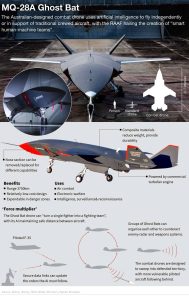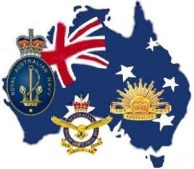
Australia Shelves Plans for $800m Ghost Bat Drone as a Combat Weapon
The Australian government has halted plans to develop the $800m Ghost Bat drone as a lethal weapon after Boeing Australia was excluded from a US government program to supply 1000 autonomous combat jets to work alongside manned fighters.
Initially seen as Australia’s most promising “killer drone,” the Ghost Bat will now be designed for intelligence, surveillance, and reconnaissance (ISR) missions, according to senior government sources. This pivot was anticipated by the government, who decided in advance to shift the drone’s primary mission in collaboration with Boeing.
A government source familiar with the program stated that developing the Ghost Bat as an ISR drone meets a critical Defence requirement and avoids the complexities of establishing “rules of engagement” for its use of weapons. Defense analysts had warned that the Ghost Bat risked becoming an expensive “orphan” if developed as an armed platform outside the US Collaborative Combat Aircraft (CCA) program.
The US Air Force selected Anduril and General Atomics as top candidates for manufacturing and testing under the CAA program, sidelining Boeing Australia. The MQ-28A Ghost Bat, the first military aircraft designed and built in Australia in 50 years, has received strong backing from successive governments. Earlier this year, the Labor government allocated an additional $400m to produce three “block 2” test aircraft by the end of next year, emphasizing the drone’s potential combat roles.
The Ghost Bat program is politically significant, ensuring 350 ongoing jobs and a new production facility at Wellcamp Business Park, west of Brisbane. Despite disappointment over not advancing in the US CCA program, Boeing remains committed to developing next-generation autonomous combat aircraft for both US and global military customers. Work will continue on the Ghost Bat and the MQ-25 Stingray, an aerial refueller designed for aircraft carriers.
 Boeing Australia highlighted the modular and open design of the Ghost Bat, enabling it to support various Australian Defence Force (ADF) missions in line with the National Defence Strategy. This strategy, unveiled in April, promises continued investment in uncrewed and autonomous systems, including the Ghost Bat, to provide asymmetric surveillance and strike capabilities.
Boeing Australia highlighted the modular and open design of the Ghost Bat, enabling it to support various Australian Defence Force (ADF) missions in line with the National Defence Strategy. This strategy, unveiled in April, promises continued investment in uncrewed and autonomous systems, including the Ghost Bat, to provide asymmetric surveillance and strike capabilities.
The Ghost Bat program has received $849m in funding, with just under $500m spent so far. Malcolm Davis, an analyst at the Australian Strategic Policy Institute, noted that the original concept for the Ghost Bat aimed to extend the reach and firepower of crewed aircraft as a flying “missile truck” and electronic warfare platform. He criticized the shift to an unarmed platform as undervaluing the concept and called for an evolved, larger version with combat capabilities.
Strategic Analysis Australia research director Marcus Hellyer argued that an unarmed Ghost Bat could still perform combat roles, such as acting as “sophisticated flying decoys” or carrying electronic warfare payloads to jam enemy radar systems. He emphasized the importance of designing the drone to incorporate new sensors, weapons, or tools easily.
The government has allocated $10bn towards uncrewed and autonomous capabilities over the next decade, introducing several new drones for the ADF. These include the US-made Switchblade 300 loitering munition for the army, capable of delivering a grenade-sized warhead over distances of up to 20km. Australian company Sypaq and Germany’s Quantum Systems will supply small tactical drones to the ADF by next year.
In addition, the government has expedited the delivery of $2bn worth of landing craft for the army. The first of 18 medium-sized landing craft will be delivered by 2026, with the delivery of eight heavy landing craft moved up to 2028 from the original 2035 schedule, according to Defence Industry Minister Pat Conroy.




Looks like Defense Procurement is up to the same old, same old. Stuffing money up the ass of a failure.
The Ghost Bat $894M with more than 1/2 spent is effectively dead in the water/sky.
Why do we keep funding wishes and not the real thing. Same companies making big bucks trying to fly
a recognised flop. Disappointing if not disgusting failure again.